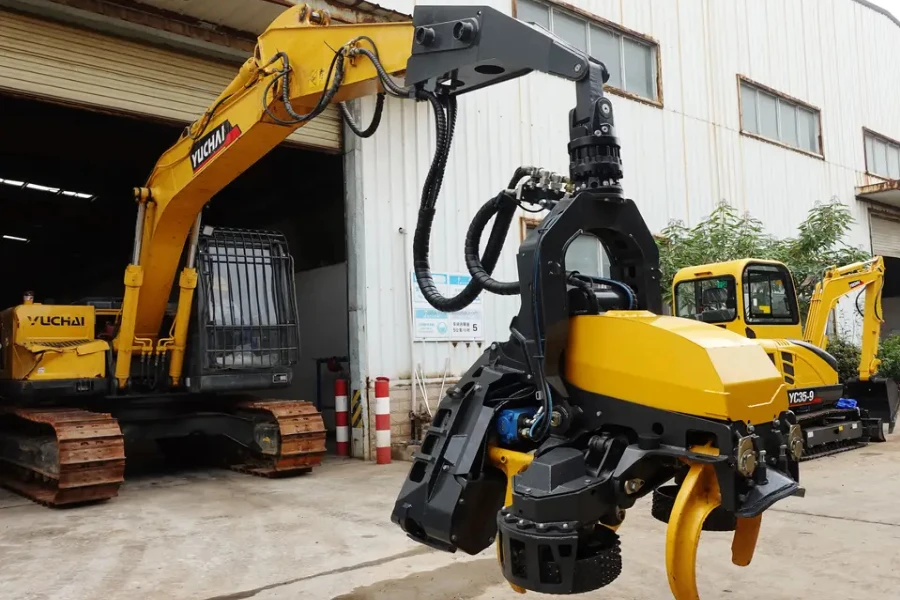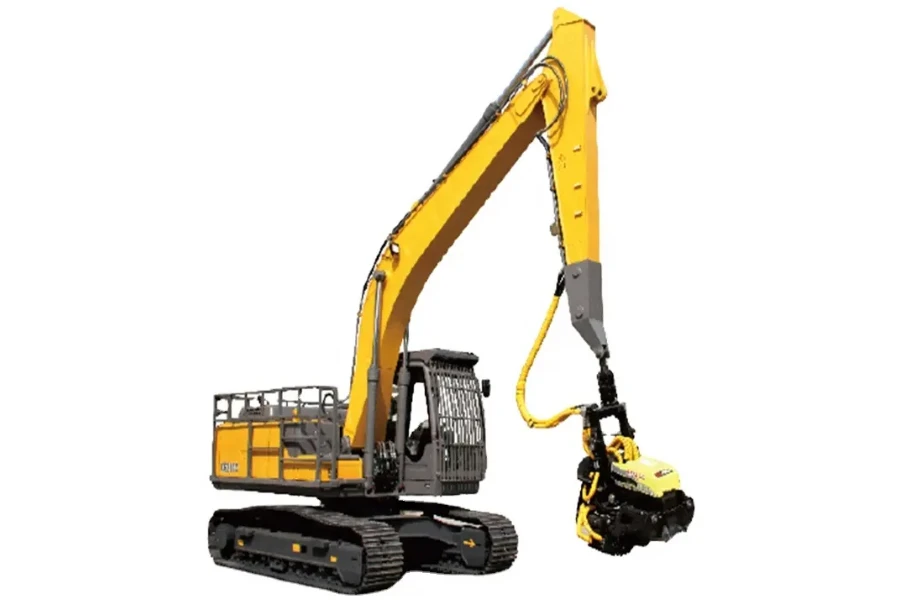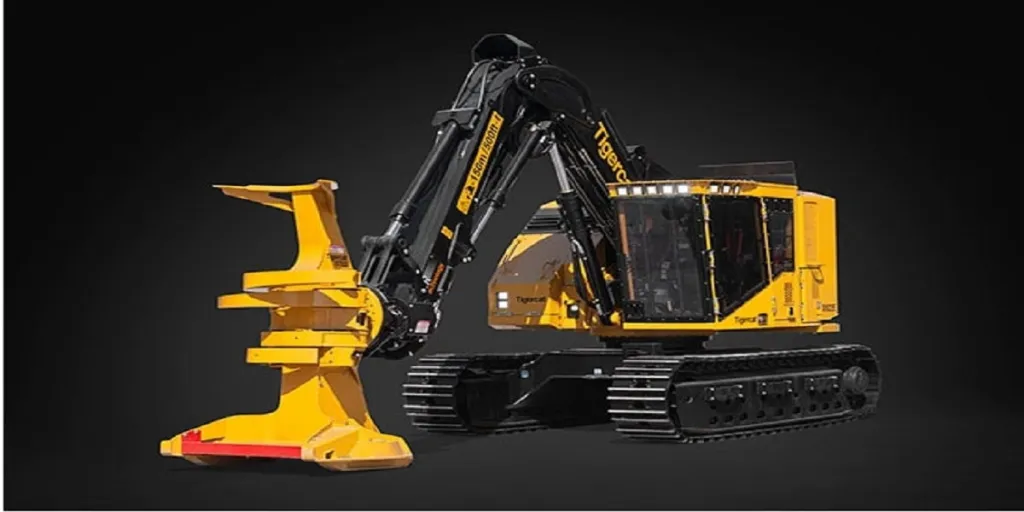Feller bunchers are vital machines for the logging industry that cut and gather trees quickly and efficiently. With so many different types and models available on the market, selecting the right feller buncher can be daunting. That’s why it is important to consider several factors when purchasing a feller buncher to ensure that you choose a machine that fits your needs and maximizes productivity.
In this article, we will discuss six things you need to consider when purchasing feller bunchers, as well as the different types of feller bunchers available in the market. The market share, demand, and size of feller bunchers will also be discussed.
Table of Contents
Feller bunchers market share
Types of feller bunchers
Things to consider when purchasing feller bunchers
Conclusion
Feller bunchers market share

According to the Market Research Community, as of 2021, the global market share for feller bunchers was valued at USD 3.784 billion and the figure is expected to reach 5.348 billion by 2030. The compound annual growth rate (CAGR) is anticipated to be 4.9% during the forecast period starting from 2023 to 2030.
The market growth for these machines is expected to grow steadily in the next few years due to increased demand for wood-based products and timber. Also, the high demand for biofuels and many other renewable resources contributes to the growth of the forestry industry, which fuels the demand for feller bunchers.
Countries with large forest areas, such as Canada, Russia, Brazil, and the United States, have a high demand for feller bunchers to aid their logging operations. Additionally, countries in Europe and Asia, including Sweden, Finland, China, and Japan, also have significant forestry industries and require feller bunchers for efficient tree cutting and removal.
Types of feller bunchers
1. Wheeled feller bunchers
Wheeled feller bunchers are ideal for flat terrain and work best with smaller-diameter trees. These machines have a cab for the operator and wheels for mobility, making them easy to move around. The feller’s head is mounted on an arm that can reach out and cut the tree, and then it grabs the tree and places it in a pile for later processing. They also have a lower ground pressure than tracked machines, meaning they can work on sensitive terrain without damaging the ground.
2. Tracked feller bunchers

Tracked feller bunchers are designed for use on rough or hilly terrain and can handle larger diameter trees than wheeled feller bunchers. They have tracks instead of wheels, which provide better traction and stability on uneven terrain. The machines are also more maneuverable and can pivot in place, making them suitable for tight spaces. Tracked feller bunchers have a slower travel speed than wheeled machines but are more effective in challenging terrains.
3. Knuckleboom feller bunchers
Knuckleboom feller bunchers have an articulated arm that can extend and move in different directions, allowing them to cut trees in tight spaces. They are highly maneuverable and can reach over obstacles, making them ideal for use in thinning operations. The knuckleboom feller buncher’s head is mounted on the end of the arm and can rotate to cut trees in any direction. The operator sits in a cab at the base of the arm, providing a clear view of the cutting area.
4. Bar saw feller bunchers
Bar saw feller bunchers have a cutting head with a chainsaw-like bar that can cut through trees quickly and efficiently. The cutting head is mounted on a boom extending to reach trees at different heights. Its head can rotate to cut trees in any direction, and it can grab the tree and place it in a pile for later processing. Bar saw feller bunchers are known for their high productivity and speed, making them ideal for large-scale logging operations.
5. Rotary feller bunchers
Rotary feller bunchers have a circular cutting head that can cut trees quickly and precisely. The head can rotate to cut trees in any direction and grab the tree and place it in a pile for later processing. Rotary feller bunchers are known for their high productivity and accuracy, making them ideal for large-scale logging operations. They can cut down trees rapidly and process the timber more efficiently.
Things to consider when purchasing feller bunchers
1. Cost
The price of a feller buncher can fluctuate widely. It is vital to consider the initial purchase cost and ongoing operating expenses, including maintenance costs, fuel consumption, and other related expenses. Setting a budget and selecting a machine that falls within your financial limitations is crucial. The price range for a feller buncher can range from USD 150,000 to USD 1,000,000, depending on the type and specifications of the machine.
2. Tree size
When selecting a feller buncher, consider the average range of tree sizes the machine will work with. The diameter of trees can vary greatly depending on the location, so it is crucial to choose a machine that can handle the size of trees in the area. It’s recommended to assess the average diameter of trees in your location and choose a feller buncher to handle the range. Selecting a machine with a smaller or too large cutting capacity can reduce productivity and increase maintenance costs.
3. Efficiency
To ensure maximum productivity, looking for a feller buncher that is efficient and can work quickly is essential. The machine’s cycle time and cutting capacity are imperative factors to consider. A fast cycle time means less time waiting for the machine to complete each task, increasing overall productivity. Similarly, a machine with high cutting capacity can handle more trees in a shorter period, completing the job more quickly.
4. Capacity
It is essential to consider the capacity of a feller buncher when making a purchase decision. The machine’s capacity refers to how much wood it can handle at once. Typically, the capacity of feller bunchers ranges from 0.3 to 1.5 cubic meters, with larger machines having a higher capacity. A machine with a higher capacity can process more wood in one go, reducing the time and effort required for emptying the machine.
5. Suitability with the environment
Select a feller buncher suitable for the environment in which it will operate. Each type of feller buncher is designed for specific terrains and climates, so choosing the one that fits your logging area’s particular conditions is essential. For instance, if your logging area is often wet or muddy, a tracked feller buncher may be more appropriate than a wheeled one.
6. Type
Feller bunchers come in various types, each with distinct features and capabilities suitable for specific logging requirements. Wheeled feller bunchers are ideal for flat terrains and can handle smaller-diameter trees. In contrast, tracked feller bunchers are designed for rough or hilly terrain and can handle larger-diameter trees. Knuckleboom feller bunchers are versatile and can work in tight spaces due to their articulated arm extending and moving in different directions. Bar saw feller bunchers have a cutting head with a chainsaw-like bar that can cut through trees efficiently, while rotary feller bunchers have a circular cutting head that can cut trees quickly and precisely.
Conclusion
When it comes to investing in a feller buncher, it is crucial to consider various factors to make an informed decision. You must determine your budget, tree size, desired efficiency, required capacity, environmental suitability, and the machine that fits your needs. In this way, you can ensure that you choose a feller buncher that meets your requirements and is a wise investment that enhances productivity and profitability in the long term. Start your search today by browsing a vast selection of feller bunchers on Alibaba.com and find the perfect machine.




